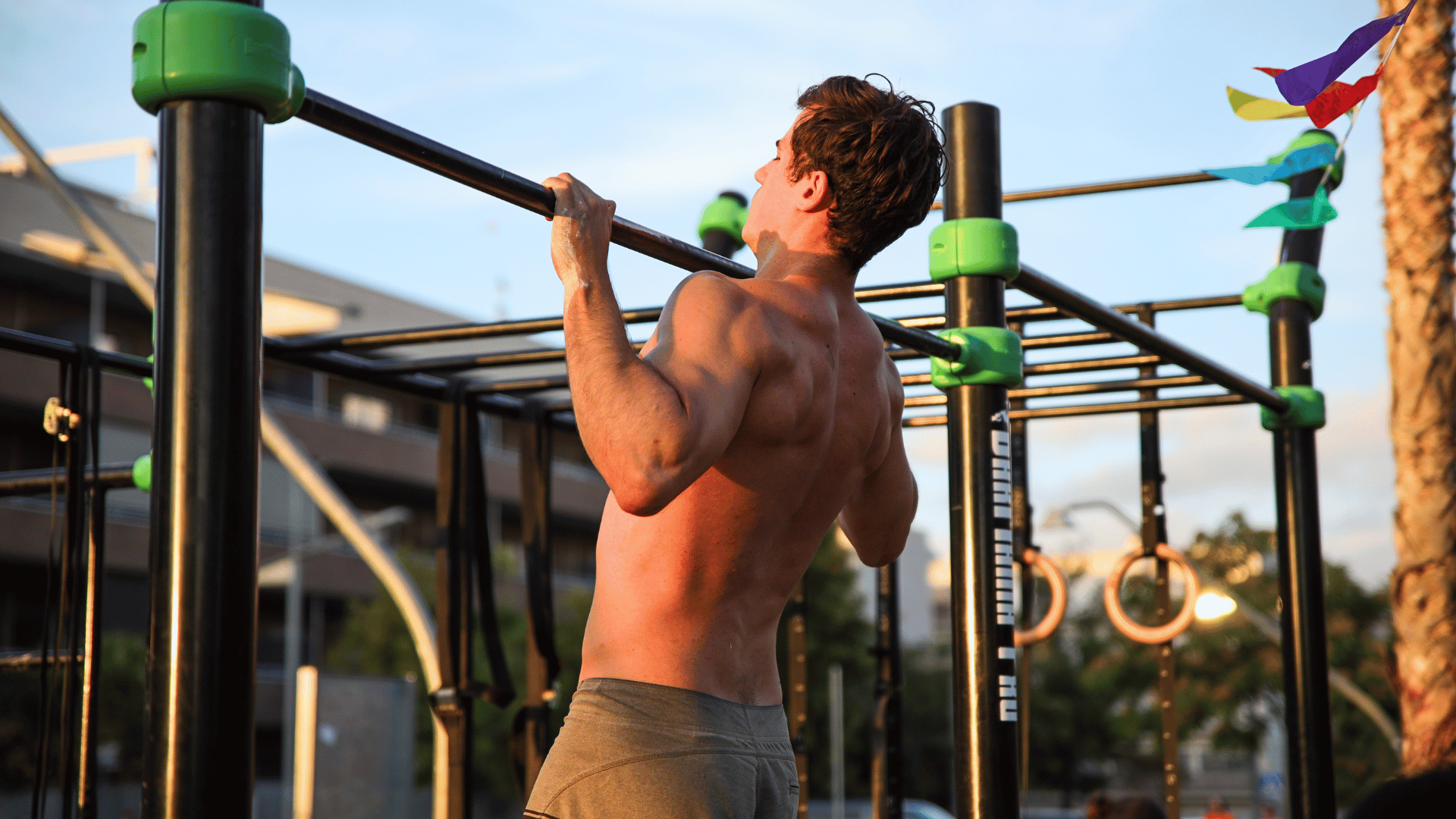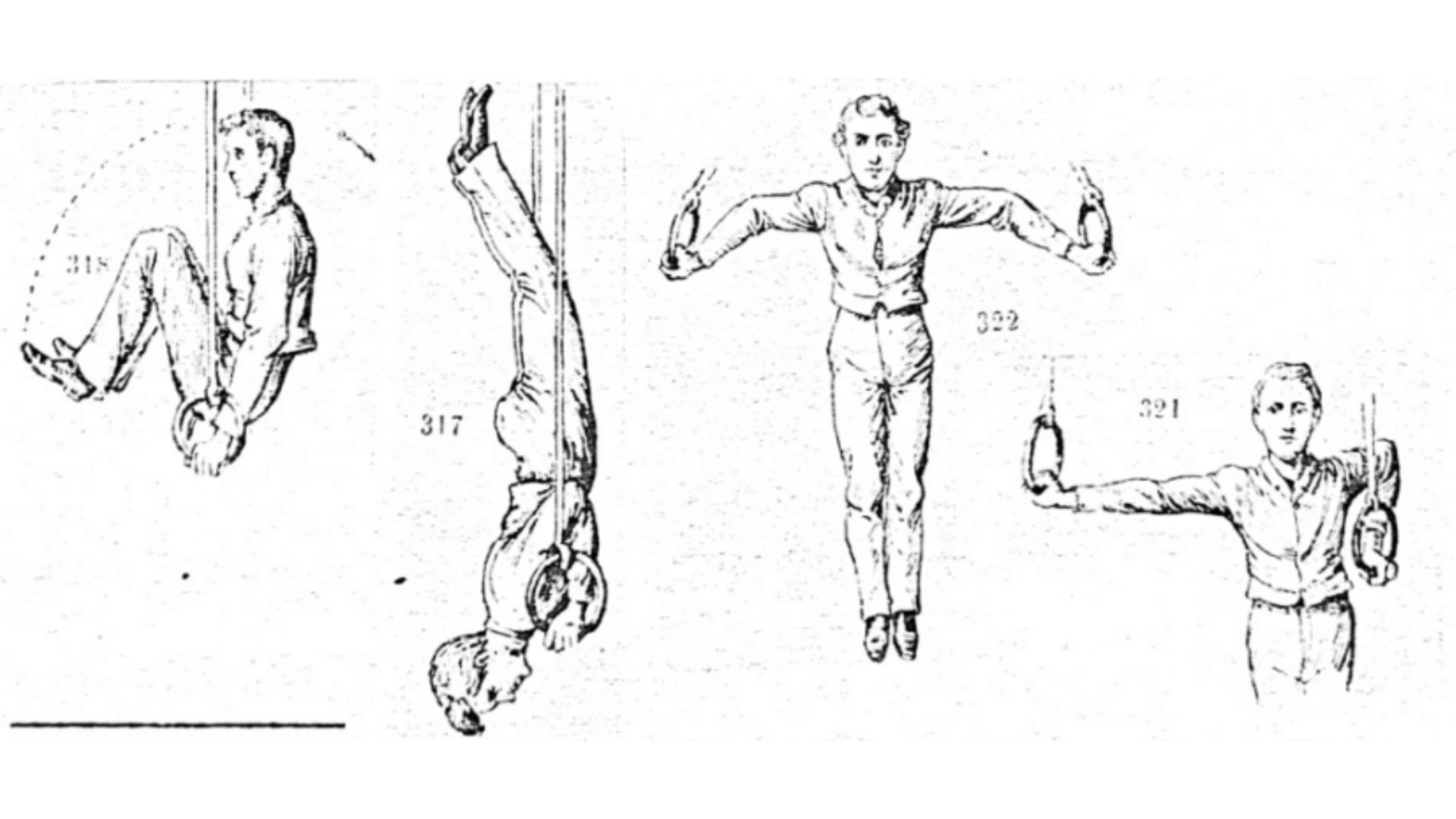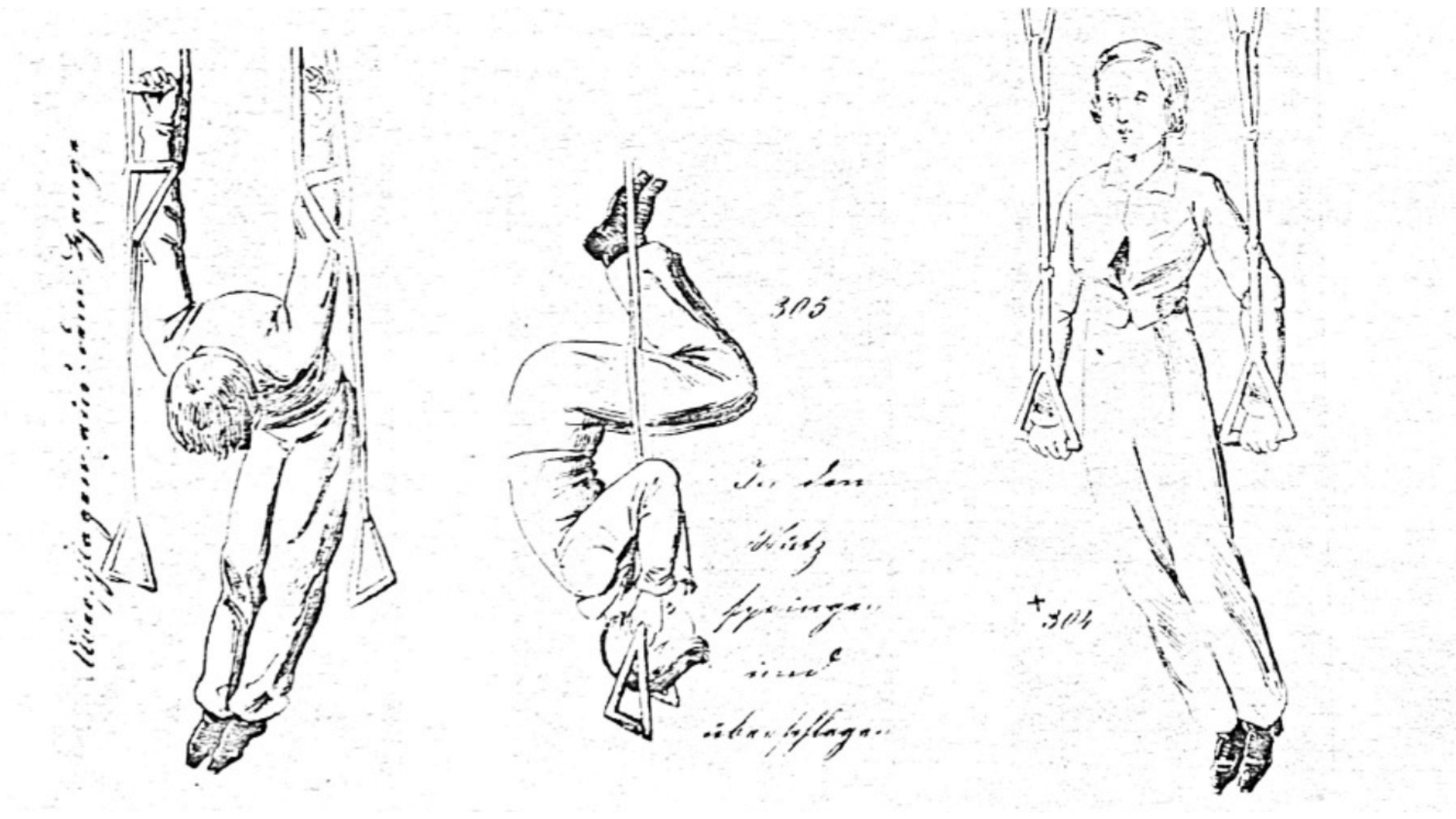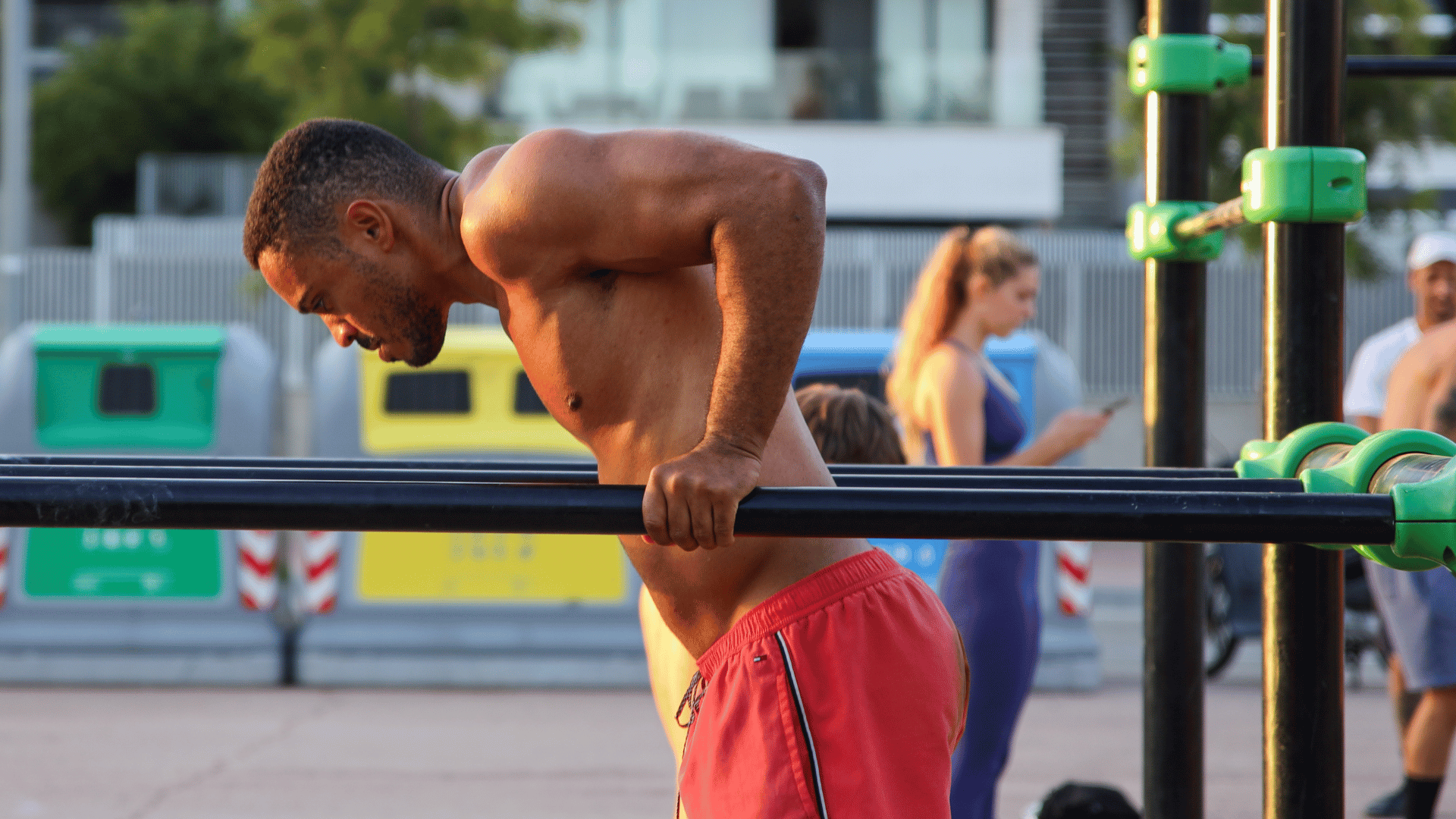What is Calisthenics? Everything You Need to Know About Bodyweight Training

Why Is Calisthenics So Popular?
Calisthenics is more than just a fitness trend—it’s a training method that is gaining followers worldwide. But what makes this workout so appealing to so many people?
The Rise of Calisthenics: Why More People Are Choosing Bodyweight Training
A look at Google search trends shows that interest in calisthenics has skyrocketed in recent years. More and more people are looking for effective alternatives to traditional weight training in the gym. One of the biggest advantages of calisthenics is the ability to train anywhere, without expensive equipment—making it an attractive option for many fitness enthusiasts.

What Makes Calisthenics So Special?
Calisthenics is gaining popularity worldwide—but what sets it apart from other training methods?
✅ Train Anywhere – Whether at home, in the park, or while traveling, you’re not tied to a gym.
✅ No Expensive Equipment Needed – You can start immediately using just your body weight.
✅ Suitable for All Fitness Levels – With different progression levels, beginners can start easily, and advanced athletes can continuously challenge themselves.
✅ Natural & Sustainable Training – No machines, no unnatural movements. Just training the way your body was meant to move.
🎯 Why Does This Matter?
Many people are looking for an effective, flexible workout without costly gym memberships and calisthenics offers exactly that!
What Is Calisthenics? More Than Just Bodyweight Training
Calisthenics Definition: The Meaning Behind the Name
The word calisthenics comes from Greek, combining kallos (beauty) and sthenos (strength). This reflects a workout that merges aesthetic movements with raw power.
The History of Calisthenics: From Ancient Times to Today
Calisthenics is far from a modern invention. The ancient Greeks used bodyweight exercises to build strength and endurance. In the 19th and 20th centuries, calisthenics played a crucial role in military training and school fitness programs. Today, thanks to social media and impressive street workout athletes, calisthenics is experiencing a global revival.
Here are some impressions of what calisthenics looked like in the past. These images were sourced from the archives of the Central Library at the German Sport University Cologne.



What Is the English Meaning of Calisthenics?
The term calisthenics comes from the Greek words kallos (beauty) and sthenos (strength). In English, it refers to a form of bodyweight training that focuses on strength, mobility, body control, and progression. Not just simple push-ups or pull-ups.
The Philosophy Behind Calisthenics: Why Do So Many People Train Without Weights?

More Than Just Muscles: The Holistic Approach of Calisthenics
Unlike traditional weight training with machines or dumbbells, calisthenics isn’t just about muscle growth. It’s about building a strong, functional, and high-performing body.
💪 Calisthenics Improves:
✔ Strength – Enhance body control with advanced exercises like muscle-ups or handstand push-ups.
✔ Mobility – Improve flexibility and joint resilience through natural movement patterns.
✔ Coordination & Body Control – Bodyweight training sharpens your nervous system and boosts balance.
✔ Injury Prevention – Functional movements help keep your body healthy in the long run.
🎯 Why Does This Matter?
Calisthenics doesn’t just make you stronger. It makes you more agile, healthier, and better prepared for everyday physical challenges!
Calisthenics vs. Weightlifting: Why More Athletes Are Making the Switch
Many people are used to training with machines or free weights at the gym. But why are so many athletes choosing bodyweight training instead?
✅ More Natural Movements – Instead of isolating muscles, you strengthen your body as a whole.
✅ Train Anywhere – Whether at home, in the park, or while traveling, no gym is needed.
✅ Training Becomes Fun – You’re constantly learning new skills and pushing your limits.
Do You Really Need Weights to Get Strong?
A common myth is that you can only build serious muscle mass by lifting heavy weights. But calisthenics athletes prove otherwise. Through progressive overload—gradually increasing the difficulty of exercises—you can stimulate muscle growth just as effectively as in the gym. Want to know how to build muscle with calisthenics? Find out here!
Calisthenics vs. Weightlifting – Which One Is Better?
Both training methods have their advantages and disadvantages. One of the biggest differences becomes especially clear when it comes to pulling exercises like rowing.

Who Is Calisthenics For?
From Beginners to Pros: Anyone Can Start Calisthenics
Whether you’re just starting your fitness journey or have been training for years, calisthenics adapts to your level. The key is progression—every exercise can be modified to be easier or more challenging. This makes calisthenics accessible for all ages and fitness levels.
Is Calisthenics Good for Beginners? Absolutely!
Many beginners worry that calisthenics might be too difficult for them. But the truth is quite the opposite:
✅ Start with Easy Exercises – Wall push-ups or negative ring rows are perfect for beginners.
✅ Natural Movements – No complicated machines or unnatural strain on your body.
✅ Quick Progress – You'll notice significant improvements within just a few weeks.
💡 Pro Tip: Begin with foundational exercises like push-ups, squats, and ring rows to build strength and body control. Want to learn the perfect way to get started? Check out the video below! 👇

How to Start Calisthenics as a Woman?
Short answer: The same way as men. 💪 Strength training is just as important for women as it is for men—and calisthenics provides the perfect way to build strength and body control.
Calisthenics Pros and Cons at a Glance
Calisthenics comes with many benefits, but there are also some challenges. The table below gives you a quick overview of the strengths and weaknesses of this training method:
Calisthenics vs. Bodybuilding – A Direct Comparison
Is Calisthenics Worth It for You?
✅ Perfect for you if you’re looking for a flexible, functional, and full-body workout.
❌ Not ideal if your main focus is maximum muscle mass and isolated exercises.
Conclusion: Calisthenics is one of the best ways to become fit, strong, and mobile—without expensive equipment or a gym membership.
How to Start Calisthenics – First Steps and Basics
Getting into calisthenics is easier than you think! All you need is your body and a structured training program. To make consistent progress, keep these fundamentals in mind:
✅ Start with the right exercises – Pull-ups, push-ups, dips, and squats form the foundation.
✅ Train consistently – 2–4 sessions per week are enough to see results.
✅ Focus on proper technique – Quality over quantity; poor form can lead to injuries.
✅ Use progression – Gradually increase difficulty (e.g., negative reps or resistance bands).
✅ Stay motivated & track progress – Only those who stay consistent will get stronger!
Learn Calisthenics Step by Step with the DIE RINGE App
With over 700 exercises and personalized training plans, the DIE RINGE App guides you through your journey—whether you're a beginner or an advanced athlete.
Calisthenics Training, entwickelt von Sportwissenschaftlern, optimiert durch smarte Algorithmen – für dein bestes Workout.

Always motivated
With the DIE RINGE App, it’s easy to make training a habit – thanks to encouraging features and structured workout planning.
Personalized Training Plan
DIE RINGE combines technology and sports science to tailor your training so you work at exactly the right level and pace.
Communicate with real people
Simply shake the app and give feedback to the DIE RINGE team. They constantly improve the app and can help you with your training.
Developed by Sports Scientists
By combining research-based training methods and effective exercises, DIE RINGE creates training plans that successfully help you build strength and muscle.

Always motivated
With the DIE RINGE App, it’s easy to make training a habit – thanks to encouraging features and structured workout planning.

Personalized Training Plan
DIE RINGE combines technology and sports science to tailor your training so you work at exactly the right level and pace.

Communicate with real people
Simply shake the app and give feedback to the DIE RINGE team. They constantly improve the app and can help you with your training.

Developed by Sports Scientists
By combining research-based training methods and effective exercises, DIE RINGE creates training plans that successfully help you build strength and muscle.
What Is the Easiest Calisthenics Exercise?
Anyone can start calisthenics—but which exercise is the best for beginners? Instead of jumping straight into complex movements like free pull-ups or dips, start with easier progressions that help you build strength, coordination, and technique.
💡 Looking for a complete beginner’s guide?
➡️ Calisthenics for Beginners: Your Ultimate Guide
Best Beginner-Friendly Calisthenics Exercises
If you're new to calisthenics and looking for simple but effective exercises to build foundational strength, these movements are perfect for you:
✅ Push-ups on Rings – Great for developing pressing strength with reduced load.
✅ Rows on Rings – Strengthens your back and arms without pulling full body weight.
✅ Assisted Pull-ups on Rings – The perfect way to learn pulling mechanics.
✅ Band-assisted Pull-ups – Helps you perform pull-ups with reduced resistance.
✅ Band-assisted Dips – A beginner-friendly version of classic dips to build strength.
✅ Passive Hang – Improves grip strength and shoulder health.
✅ Hanging Leg Raises – A simple way to activate and strengthen your core.
💡 Want to explore more exercises?
➡️ Calisthenics Skills – The Ultimate Guide
Can You Do Calisthenics at Home? – Equipment & Space Requirements
Yes! You can easily train calisthenics at home since all you need is your own body weight. However, a few pieces of equipment can make your workouts more effective and versatile.

What Equipment Do You Need for Home Calisthenics?
Beginners only need a rug or yoga mat for floor exercises. However, with minimal equipment, you can make your workouts far more effective.
Essential Home Calisthenics Equipment:
✔ Gymnastic Rings – Extremely versatile for both pulling and pushing exercises.
✔ Pull-up Bar – Perfect for pull-ups, hanging exercises, and core training.
✔ Parallettes – Great for push-ups, dips, and handstand training.
✔ Resistance Bands – Ideal for assisted pull-ups and dips.
✔ Ceiling Hook – The best solution for securely mounting gymnastic rings.

Conclusion: Is Calisthenics the Right Training for You?
Calisthenics is one of the most effective and flexible workout methods—you can train anywhere without expensive equipment. Whether you're a beginner or looking for a new challenge, this training adapts to your level and helps you progress step by step!
Key Takeaways:
✅ Suitable for all fitness levels – Beginners start with easy progressions, while advanced athletes can continuously challenge themselves.
✅ No expensive equipment needed – Train efficiently using just your body weight.
✅ Full-body functional strength – Ideal for building strength, mobility, and coordination at the same time.
✅ Maximum flexibility – Train at home, in the park, or while traveling—no gym required.
💡 Calisthenics sounds perfect for you? Then start today! 🚀

DIE RINGE App: Calisthenics training developed by sports scientists, optimized by smart algorithms—for your best workout experience.